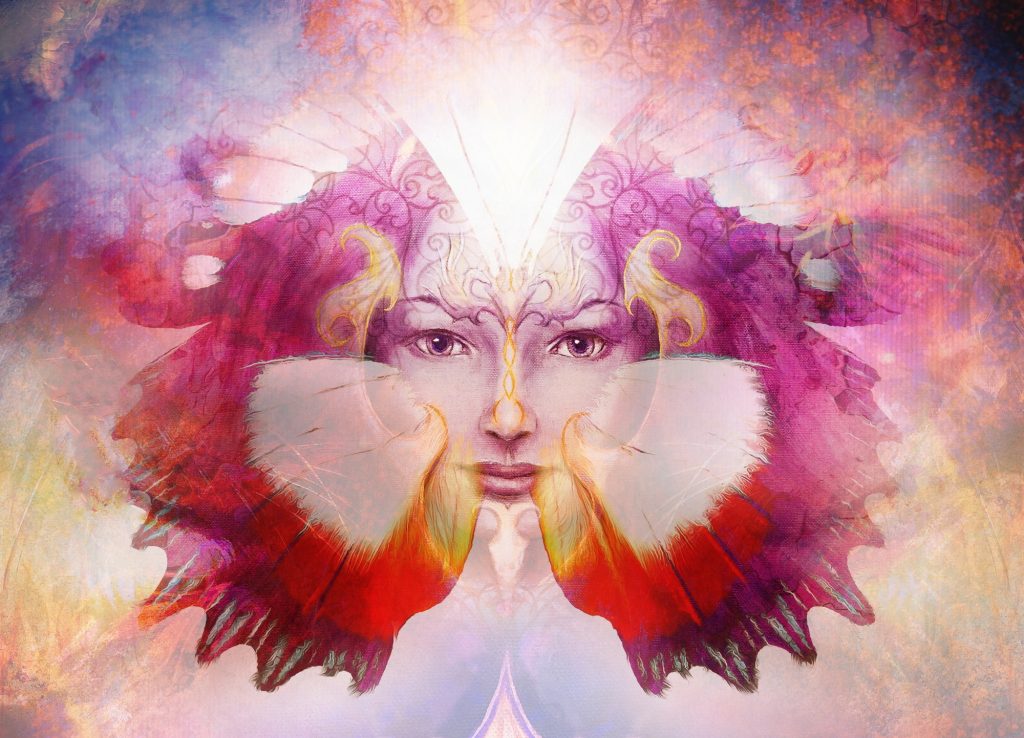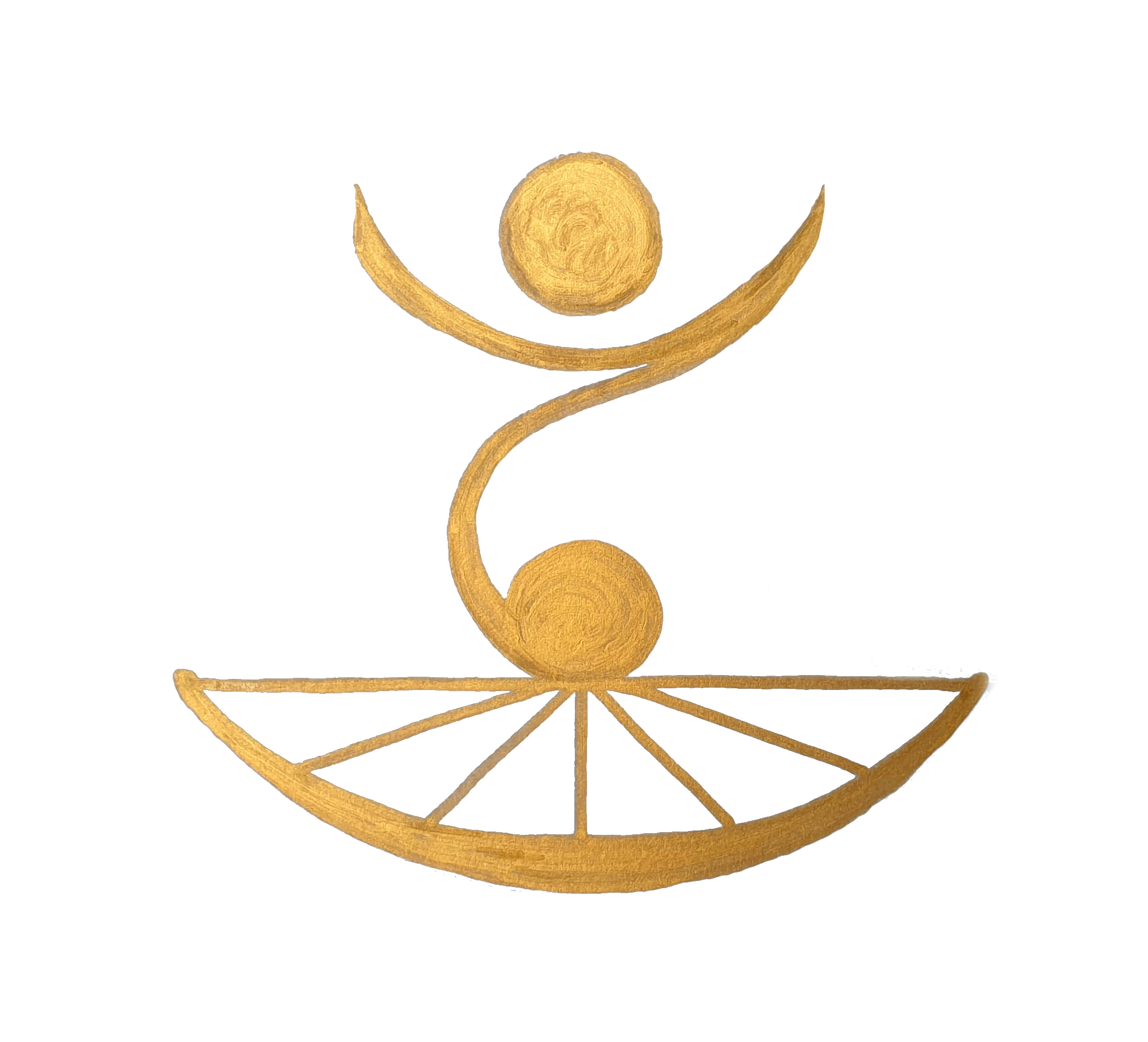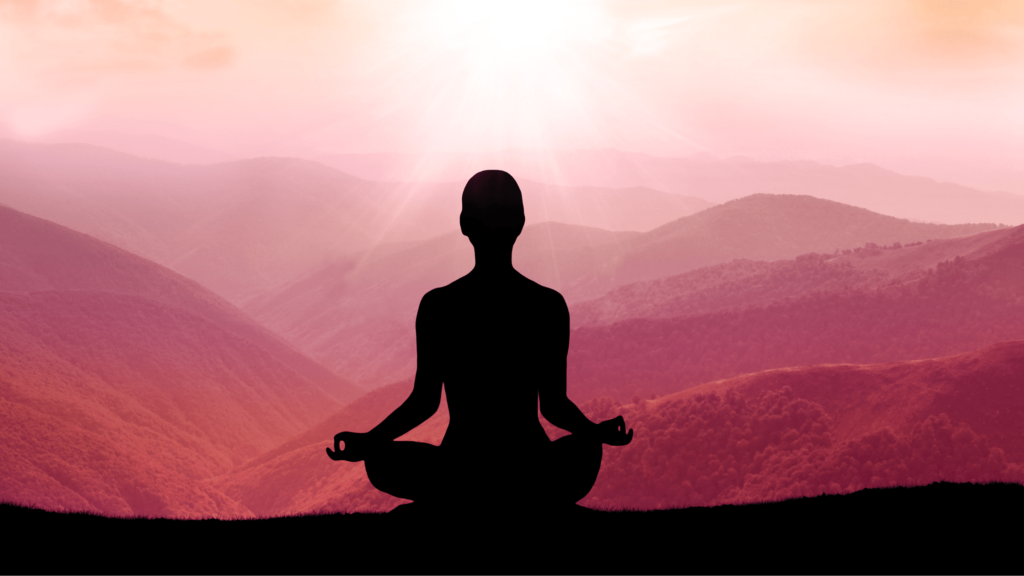Is Trauma the Portal to Spiritual Awakening?
It has been said that psychology and spirituality have opposite goals.
Psychology is about reclaiming the disowned parts of self in order to feel whole, while spirituality is about living from beyond a personal self altogether – as part of universal connectedness.
This presents a problem. If spirituality is the embrace of all that is, how can it include a rejection of any part of you?

It cannot.
That is called spiritual bypassing.
It’s the innocent yet inevitable outcome of seeking bliss through consciousness where one has not yet healed the disowned self.
I am not here to judge anyone for wanting happiness. My intention is to explain why every spiritual seeker needs to embrace the healing of their humanity first. Only from the foundation of a whole, self-loving being can you can authentically attain enlightenment.
For many of us, that means repairing a missing or ungrounded sense of self. Is your identity lovingly defined from deep within, or does it change based on how others react to you?
If it’s the latter, one cannot heal without addressing trauma. So let’s explore what trauma is, learn how to work with it, and hear what three psychology and spirituality experts have to say about the inextricable link between these seemingly opposite fields. Could it be that healing trauma is the portal to genuine awakening?
WHAT IS TRAUMA?
Trauma can simply be defined as the experience of feeling unsafe. A physical threat to survival releases a cascade of hormones to prepare the body for fight or flight. When neither outcome is possible, this intense energy gets stored in the body, waiting for release. So we can definitively say that trauma is not just an emotional experience – it’s very much physical. This is why it cannot be ignored. Unfortunately, our minds also create all kinds of interpretations of why it happened to us, keeping the resulting emotional charge alive until we heal.
Here’s where it gets more complicated. There are actually 4 kinds of trauma: in utero, birth, life, and ancestral. Because they are stored in the body, unresolved traumas are actually passed down via DNA material along with physical genes! Our family lineage can be seen as a curse, or an opportunity to deeply connect with the souls of multiple generations forward and back as one. For a fascinating look at inherited trauma, see Mark Wolynn’s work. For the purposes of this article, I am going to focus on life trauma.
Most of us think of trauma as significant events like war, abuse, violence, etc. However, there is a second form that is more pervasive; attachment trauma. It feels like a lack of reliable warmth, care, love, and affection during childhood. While this might not seem as significant as war, healthy attachment is the base for secure human relationships throughout life. If a person had secure attachment in childhood and experienced a traumatic event later in life, recovery is much easier.
We are born primed for affection, attunement, and connection. These emotional needs are not luxuries. They are required in order to develop into healthy, happy human beings. If we do not receive warm, loving nurturing from our caregivers, we learn that relationships are unsafe, the world is hostile, and we are unworthy of love. If we are repeatedly scolded for not behaving according to our parents’ wishes, we learn to reject ourselves.
Because these feelings are too enormous for babies and children to bear, the mind represses them into the subconscious. Eventually those traits become the disowned or shadow self. Now we create all kinds of adaptations and behaviours to protect ourselves from ever feeling this pain again. Further, we project judgment on anyone who expresses them in an unconscious attempt to relieve our guilt and shame.
Carl Jung, the famous Swiss psychiatrist said:
“The shadow is the block that separates us most effectively from the divine voice. There is no coming to consciousness without pain. To confront a person with his own shadow is to show him his own light. Until you make the unconscious conscious, it will direct your life and you will call it fate.”
HOW MIGHT THIS SHOW UP IF YOU ARE A SPIRITUAL SEEKER?
Our interest in spirituality can appear healthy, yet it could actually be a dangerous addiction. It’s important to discern your motivation.
Very early wounds of rejection and abandonment can lead to an obsessive interest in spirituality as an adult. We can use spirituality to justify not being in our bodies, having intimate relationships, or even needing a personal self at all. It’s easy to understand why. When we’re not in our bodies or avoid being triggered by those who are close to us, we don’t have to feel our pain. Further, spirituality can feel really, really good!
Many people become a broken record message of unconditional love to avoid confronting their own shadow. It’s not that unconditional love doesn’t exist. If we don’t have a healthy sense of self, our experience won’t be authentic because we haven’t unconditionally accepted ourselves yet. You may be able to awaken somewhat on a mind/mental level, but you won’t feel love deeply embodied in the heart because there is still so much defensive protection in place.
So, we can see that the pain from unhealed trauma is what creates our sense of unworthiness in life. Shame is the lowest emotional frequency a human can experience because it says something is wrong with me. It is a total separation and isolation from life itself, and the opposite vibration to oneness. This is what you’ve been battling against.
Why does this happen? Because the developing brain cannot discern the truth of our intrinsic worthiness. A child can’t come to the conclusion that mommy or daddy are wounded themselves, so they turn inward and self-blame as the source of the problem. We are all vulnerable, by design.
While this feels distressing, there is a greater purpose.
THE SACRED GIFT OF TRAUMA
Dr. David Beceli is the creator of the TRE modality – “trauma releasing exercises.”TRE is a system of tremor-inducing exercises that shake the body’s muscles to release traumatic energy. His research shows that the human body is physiologically designed to experience and release trauma, and to grow from it spiritually.
Healing trauma creates a phenomenon known as post-traumatic growth. When we physically release the stored traumatic energy from the body, we create much greater depth as human beings. We turn on additional right-brain capabilities such as wisdom, intuition, and divine purpose. Dr. Beceli calls this the “sacred gift” of trauma. It seems we are meant to move through the experience of healing trauma as a rite of passage on the evolution of human potential.
TRAUMA AS TRANSCENDENCE
Dr. Peter Levine is a psychologist and creator of Somatic Experiencing, a therapy that uses a variety of gentle movements to release fight or flight energy and suppressed emotions. In his book, ‘In an Unspoken Voice’, he likens the experience of healing trauma to surrender and spiritual transcendence:
“The ‘awe-ful’ states of horror and terror appear to be connected to the transformative states such as awe, presence, timelessness, and ecstasy. …trauma sufferers, in their healing journeys, learn to dissolve their rigid defences. In healing the divided self from its habitual mode of disassociation, they move from fragmentation to wholeness. In becoming embodied they return from their long exile. …the survival response embedded within trauma can also catalyze authentic spiritual transformation.”
BECOMING A REDEEMING PRESENCE
Last week, I was blessed to be in the presence of one of the world’s great spiritual teachers, Adyashanti during his visit to Toronto, Canada.
I was even more blessed to have been chosen to ask him a question. As a committed spiritual seeker who is also studying a trauma certificate, I relished the opportunity to ask how we should handle trauma. Since we aren’t our thoughts or our emotions, when it comes up, do we ignore it?
He emphatically answered, no! It made my heart sing to hear a true spiritual master embrace this important topic with the compassion and attention it deserves.
He asked: if you see a child cowering in the corner in pain, what is your natural instinct?
Of course you want to wrap your arms around this innocent being and comfort them. Your compassion is automatic.
If trauma occurred when you felt unsafe and rejected, then the answer is in the opposite action.We must bring safety and compassion to ourselves.We all have a little child inside who is suffering. It’s important to validate what happened to you.
Adya recommends talking to your body. Ask it to only give you what you can handle. As the energy intensifies, remind yourself that you are physically present in this moment. Feel the earth beneath your feet, or the solidness of your chair. This is called grounding in psychotherapy, and it tells you that you are safe.
It’s important to recognize that as an adult you have more bandwidth to process the trauma. You can sustain feeling those big emotions now. You can use the intellect to question the truth of your interpretations about your own worthiness. Ask yourself, what is an equally plausible alternative explanation? Break up the heaviness and certainty of what your child-self believed to be true.
In beautiful Adya fashion, he also explained that we must become aware of the difference between transcendence and what he called redemption, or what I would interpret as healing.
Transcendence is when we connect with the expansiveness of consciousness. You might call it presence, silence, or oneness. This is not the place to heal. How can we; the disowned self is not present. In fact, we can feel like everything is perfect. But as soon as we drop back down into ourselves, the pain is still there. Temporary transcendence does not mean you have healed.
Redemption happens below the neck, as confirmed by Dr. Beceli, Dr. Levine, and many others. It is your work to heal all of your traumas so that you become a redeeming presence for yourself and others. You don’t do it through spirituality or by ignoring it. You must be willing to drop into the body to feel your distressing emotions with a loving presence. In no longer avoiding or resisting them, you allow the stuck energy to move and release. When you combine this with somatic exercises, you deeply heal.
Adya also issued a warning to be careful when seeking transcendence. It can feel like total openness and vulnerability. This state can mirror the feeling of childhood innocence right before trauma took place. Go slowly.
Once you clear all of your traumas, you become a redeeming presence for others – your partner, your family, the person vehemently disagreeing with you. Because we’re all one, you now hold that loving space for them to heal.
In closing, he beautifully described how spirituality and trauma meet. Although Spirit is formless, it wants to inform inyour body. It cannot do that if it’s full of unhealed traumatic energy. As you clear it, you open up more and more space for Spirit to embody inside of you. Healing trauma is howyou create physical emptiness.
FURTHER CONTEMPLATION
We can all agree that trauma causes devastating suffering, and yet we have evidence that we were designed to experience it.
What if trauma is not the enemy, but the opening? Could it be the invite to fully surrender all of your ego defences to God? To finally love yourself?
Because trauma is incorrectly explained by the mind, this perfectly demonstrates its dangerous nature. Are we willing to surrender the very instrument that seemed to protect us initially, yet is actually the causeof our deepest pain?
What about the rewards of courage? What if the willingness to completely feel our fears by dropping into the depths of our existential pain is the exact same willingness required to go all the way in spirituality?
Could healing trauma be the sacred rite of spiritual initiation, both emotionally and physically?
CONCLUSION
Many of us are innocently drawn to spirituality as a means of escaping the suffering of the unconscious wounded self. When this happens, our ego mistakes it for enlightenment, but it is premature. As we have seen, the answer cannot be found in transcendence. We must turn our attention downward and within. When you remove the blockages, you make space for Spirit to live within you, and reveal itself as the source of profound love through your open heart.
All of the enlightened masters walked this path. Jesus died in great suffering for all of humankind yet loved his abusers as they killed him. The Dalai Lama is perhaps humanity’s most treasured reminder that compassion is the highest expression of love in action.
Compassion is only possible when you have healed your own pain and reclaimed your innate worthiness. You cannot hold the suffering of others if you are unconsciously triggered by them. When your life becomes a living, breathing shrine to lovingly embracing all that is, you become a redeeming presence for all.



